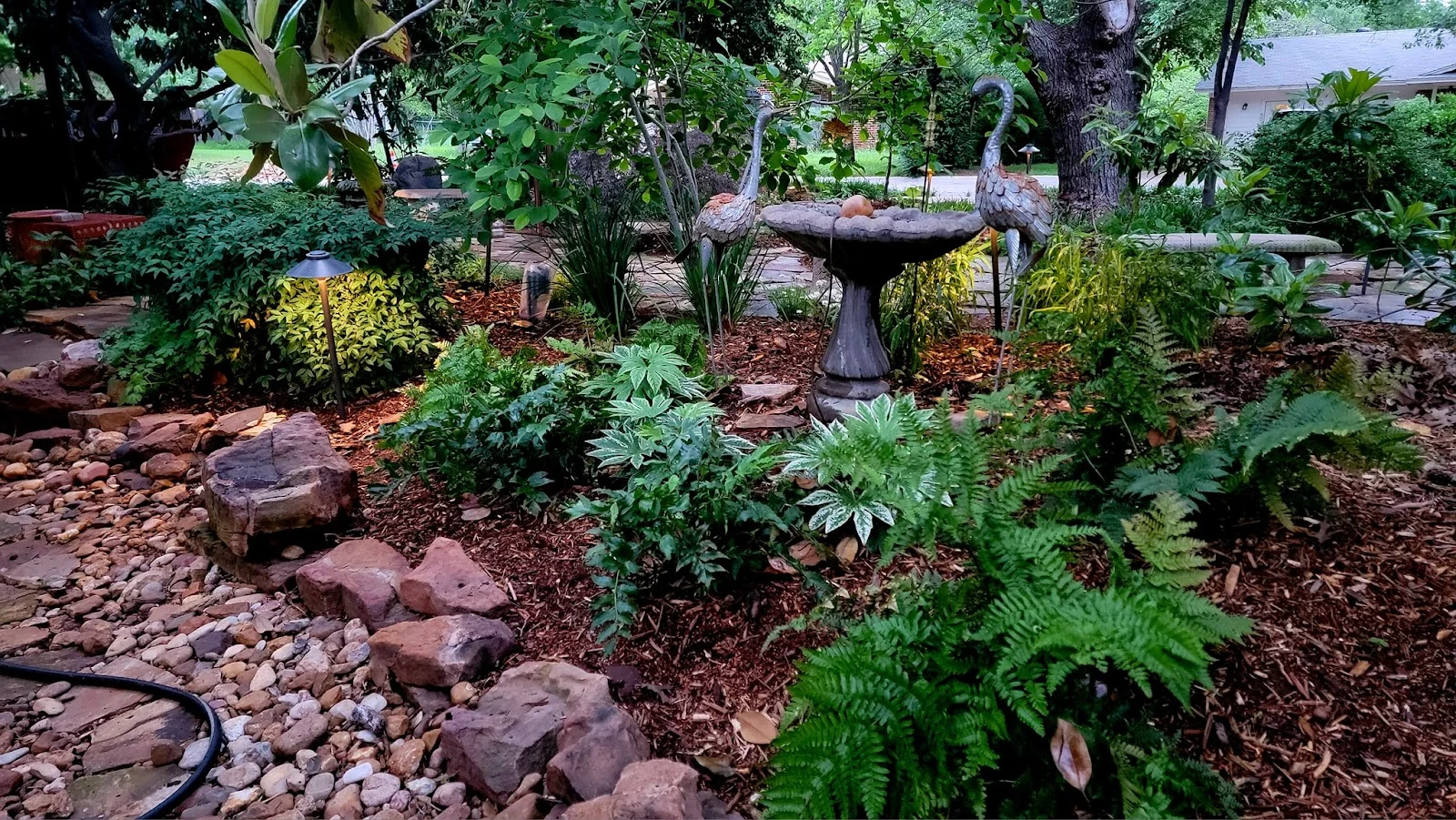Fireflies play hide and seek in the fading light as the day softly slips into night. It is an ordinary, early summer evening in the 1960s in the burgeoning city of Dallas, Texas. Children run wild until dark—as electric and commonplace as the insects around them.
Today there are no fireflies in Dallas. Their lights ceded to the seemingly endless stream of headlights; their habitat gobbled up by the exponential growth the city has experienced in the decades since those warm summer nights in the 60s. But those of a certain generation remember them, among them is Wallace Hall.
Hall, a lifelong Texan, was once one of those children running wild with the fireflies. Brought up roaming his family’s acreage and making excursions to The Dallas Hunting and Fishing Club, where he’d fish on the banks and splash in the bottoms of the Trinity River, his connection with the natural world was forged at a young age.
It was further fortified by formative wilderness experiences and impactful mentors he encountered while attending St. Mark’s School of Texas. He credits earth science teacher, Stephen Seay, for teaching him that education is a place-based opportunity available wherever one finds themself, and the naturalist and outdoorsman Peter Lutken for furthering his attunement to and respect for the majesty of nature.
This connection is something that Hall has fostered and passed down to his own children, which he highlighted in a recent interview with Kinute.
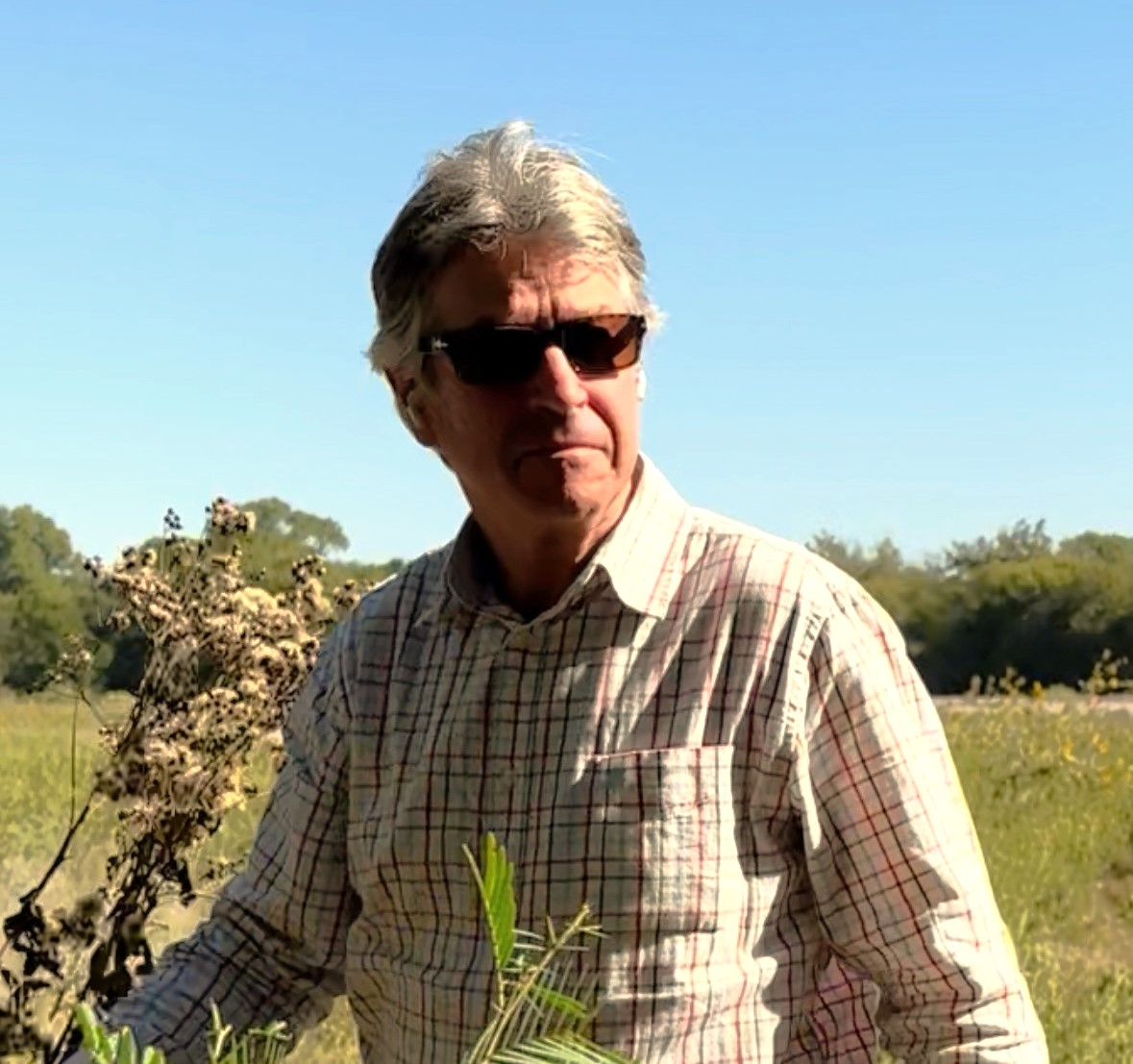
Wallace Hall, Founder of BILI. (Photo: Wallace Hall)
Laughingly, he recounted the long ago search for his then six-year-old son at an Easter brunch. Thankfully he’d been safely in the care of the snapping turtle down at the creek.
It is this lifestyle of interconnectedness with the natural world that he sees as a staggering loss for today’s youth, “We city dwellers are very disconnected from nature, and it's really stark. Our children of today have spent very little time outdoors, and when they do, they spend it in neighborhoods where there is no nature,” Hall said.
In the wake of this loss, he has also identified an opportunity. Children, with their innate curiosity, are an ideal entry point for revitalizing people’s connection to nature—with the landscapes around them serving as the jumping off point.
That’s just what Hall is setting out to do through the ambitious Biodiversity is Life Initiative.
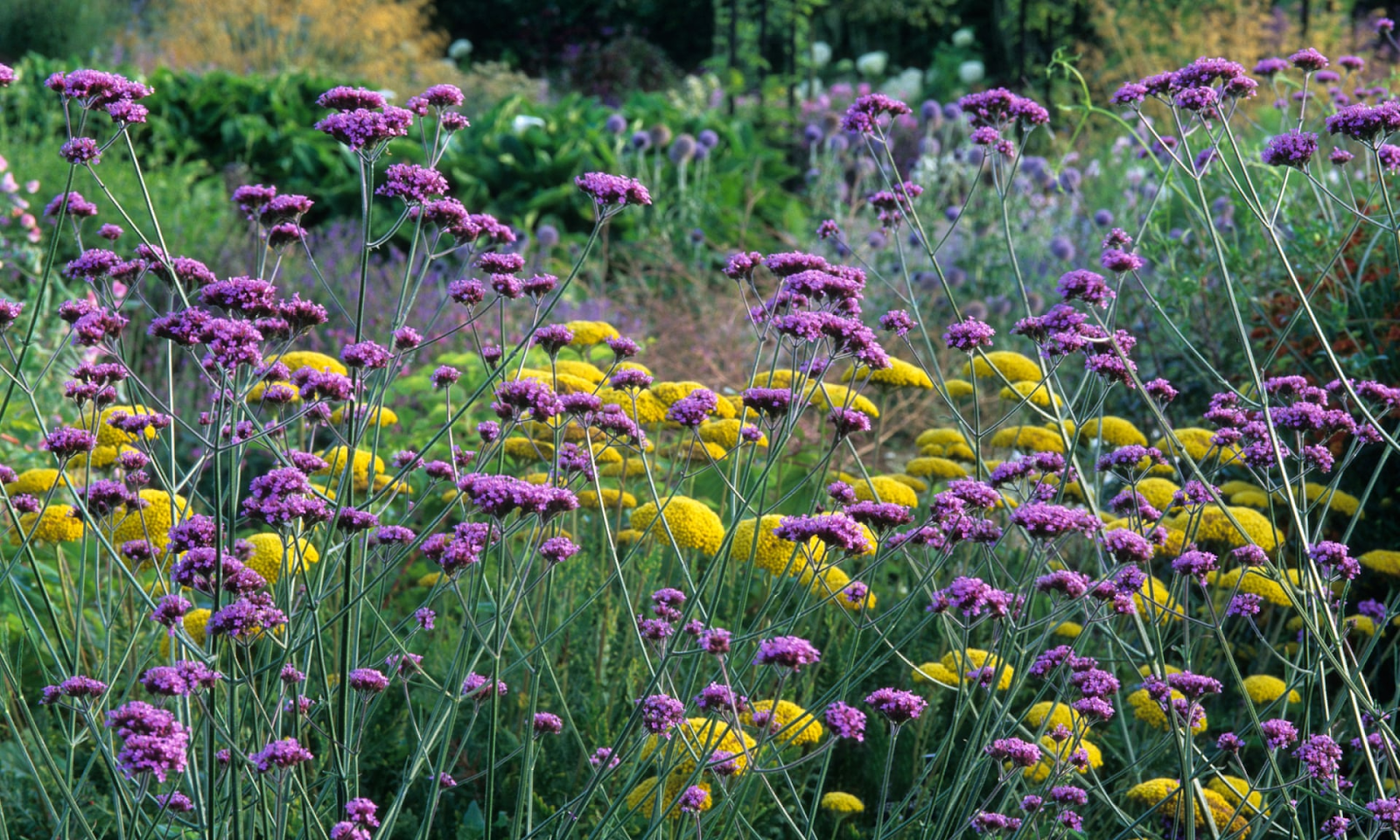
Purple Verbena and Yellow Yarrow, providing a Texas landscape with vibrant colors and buzzing bees. (Photo: Texas Nativescapes / Facebook)
Biodiversity is Life
The Biodiversity is Life Initiative (BILI) is a novel DFW-based nonprofit focused on native plant proliferation and education. Hall has donated a 40-acre tract of land in East Fort Worth to the Initiative. This will serve as BILI’s headquarters, which will host extensive display gardens comprised entirely of native plants, greenhouses, and a native plant nursery offering free plants to visitors.
BILI is offering the plants free of charge, donation optional, as a way to incentivize the use of native plants in landscaping. Hall believes that a connection with the natural world can start in your own backyard, if nature is there to connect with.
The campus will welcome visitors from the general public, as well as schools and educational groups. “The challenge is one of education and to return the fun and the beauty of nature to our young people,” Hall says.
“There's nothing greater to me than seeing a child's eyes light up when they see something new. It's like they never knew it was there.”
It is this sense of wonder that sparks curiosity and connection. Taken a step further, this connection is what drives people to care and take action.
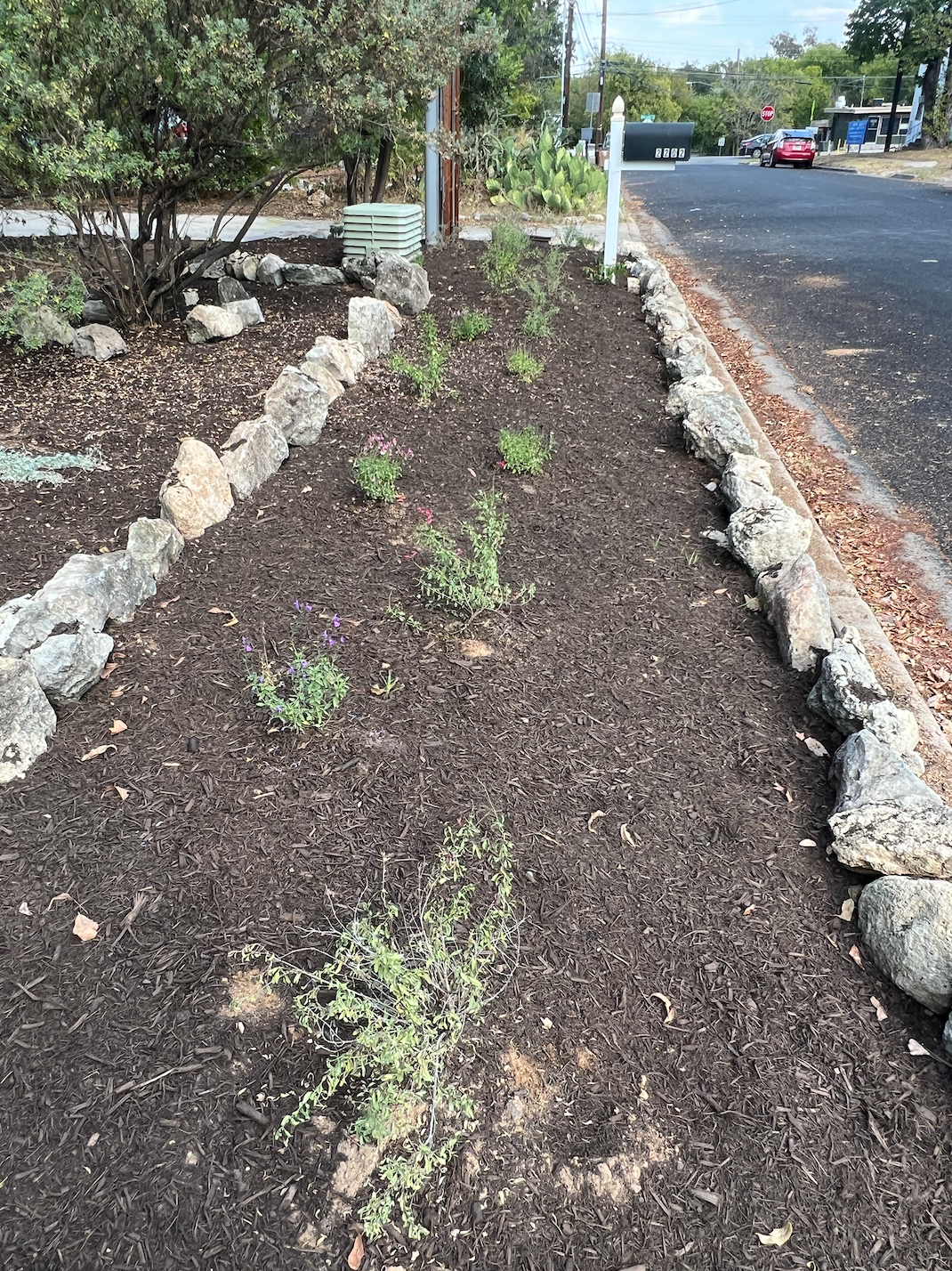
Newly planted garden bed with Baby Sage, Blue Salvia, Largeleaf Lantana. (Photo: Kinute)
In regard to native plants, critical relationships exist between these plants and insects and wildlife. These relationships can be observed and fostered through the presence of native plants in a landscape.
Modern landscaping is centered around the antiquated archetype of the lawn, which was once a symbol of prosperity—as only English nobility could afford to have vast swaths of unproductive land and the staff to tend it.
Today lawns are the norm, with over 31 million acres within the U.S. being allocated to grass lawns—more than any other crop.
The EPA estimates that within the U.S., nearly nine billion gallons of water per day are used for landscape irrigation, with much of that being allocated to lawns. Up to half of that is being lost due to inefficient watering methods.
Lawns also contribute significantly to carbon dioxide (CO2) emissions. Standard gas mowers are up to 11 times less efficient than modern gas automobile engines. With millions of acres to mow comes millions of tons of CO2 in the atmosphere—nearly 30 million tons annually according to the EPA, that’s more than the city of Los Angeles.
In addition to prolific grass monocropping, modern landscapes are often filled with non-native globalized plant species that offer little value beyond aesthetics.
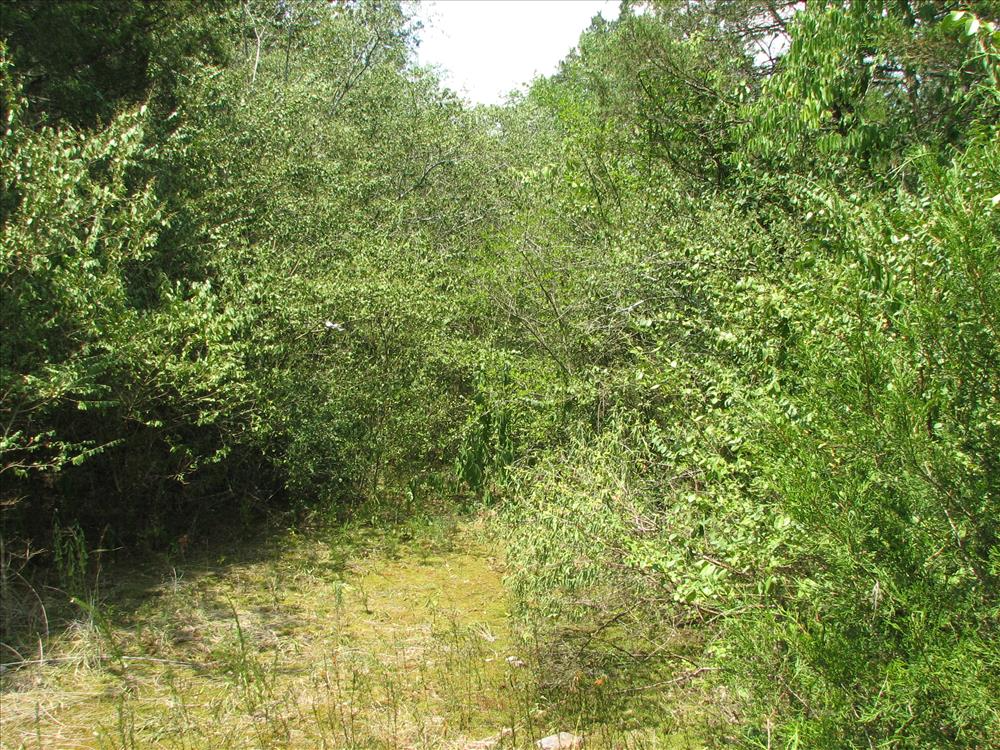
Chinese Privet is considered extremely invasive in the Dallas-Fort Worth area where it actively chokes out major native undergrowth in forested woodlands. (Photo: National Parks Service)
In discussing the seemingly monumental paradigm shift that is necessary, Hall used an analogy from the book The Song of the Dodo by David Quamman. Imagine cities, roadways, and monocrop agriculture as being like the ocean—one that is continuously expanding, leaving islands of nature farther away from one another. When species are stranded, they will begin to disappear.
“If nature doesn't have the ability for insects and reptiles and birds and mammals to travel these migration corridors … it's a matter of time before you're going to start having the cascading events of nature collapsing,” Hall said.
“We need to do something to make sure that we have islands where nature can continue to leap, for species to get to where they need to go to survive.”
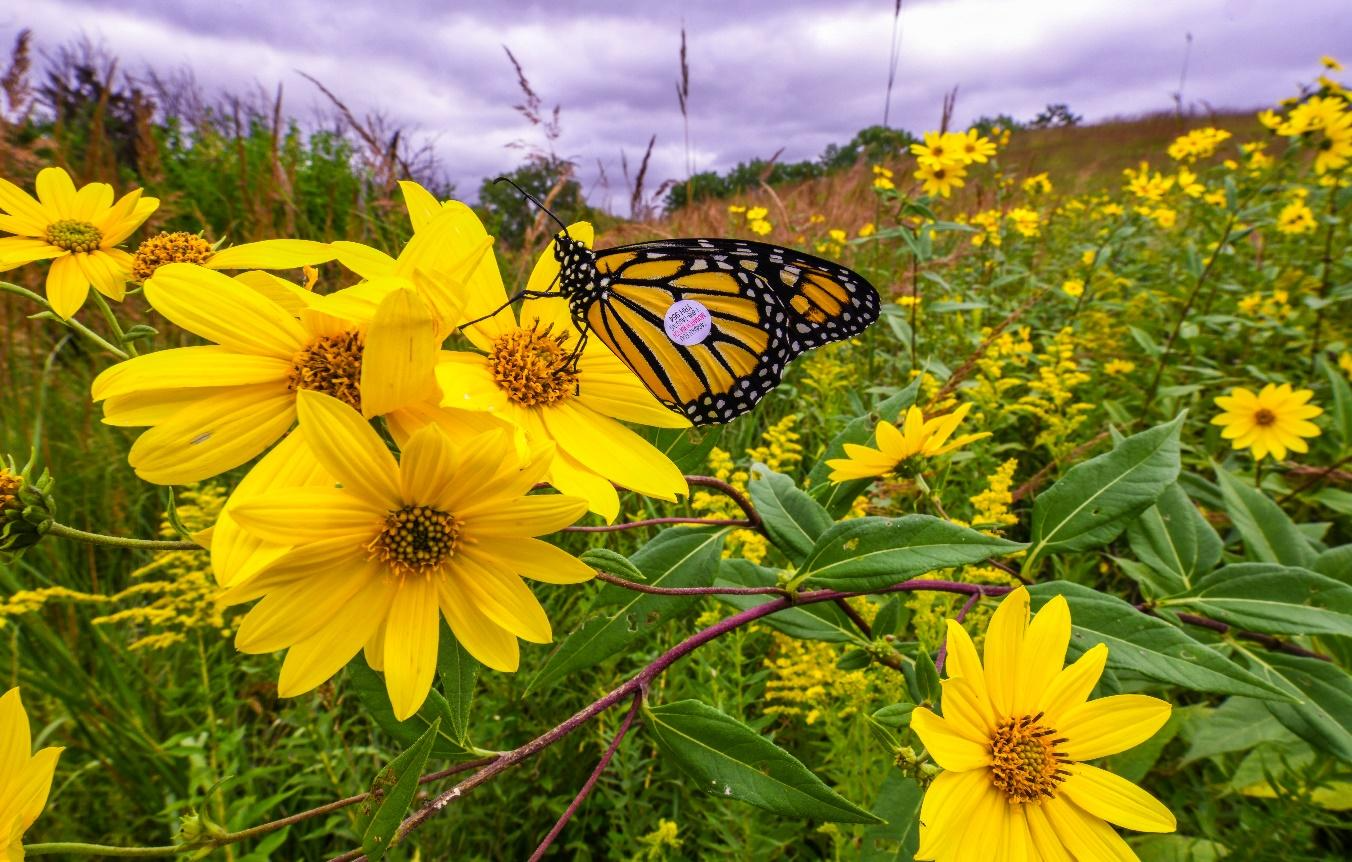
A monarch butterfly feeds on a Tickseed Sunflower. Every year, millions of these pollinators rely on native plants to migrate 3,000 miles. (Photo: Bee and Butterfly Habitat Fund)
The BILI campus will serve as an inspiration and provide education about an alternative way to help biodiversity to thrive, even amidst an urban backdrop.
“In the United States, one acre at a time we've built our cities, we've built our highways, and now we need to start replacing some of it one acre at a time,” Hall said.
Plans are being laid for there to be interactive components throughout the garden campus, as well as technology tools to help budding native plant advocates to familiarize themselves with the plants they take home.
While the campus itself will be entirely comprised of natives, Hall wants the barrier to entry into the native plant world to be low and to meet people where they are at.
“We don't want all your yard. We just want you to think about a few pots, or a bed, or a strip … There are places in your yard that you can do things to that provide an island of resources to nature that don't currently exist, and they're beautiful,” he said.
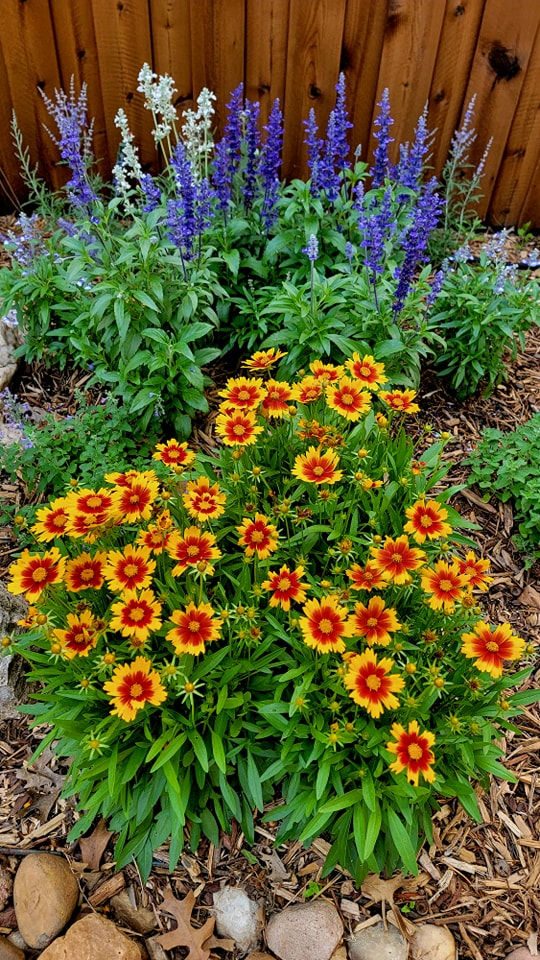
Even dedicating a small corner of a backyard to plants like Purple Salvia or Gaillardia Pulchella can provide the "islands" for pollinators to leap from. (Photo: Texas Nativescapes / Facebook)
Native plants, especially in climates that are prone to heat and drought, use far less water. Other benefits include suspending use of lawn chemicals and pesticides, which would negatively impact the insects that have co-evolved with native plants in any given area and serve a vital purpose in the ecosystem.
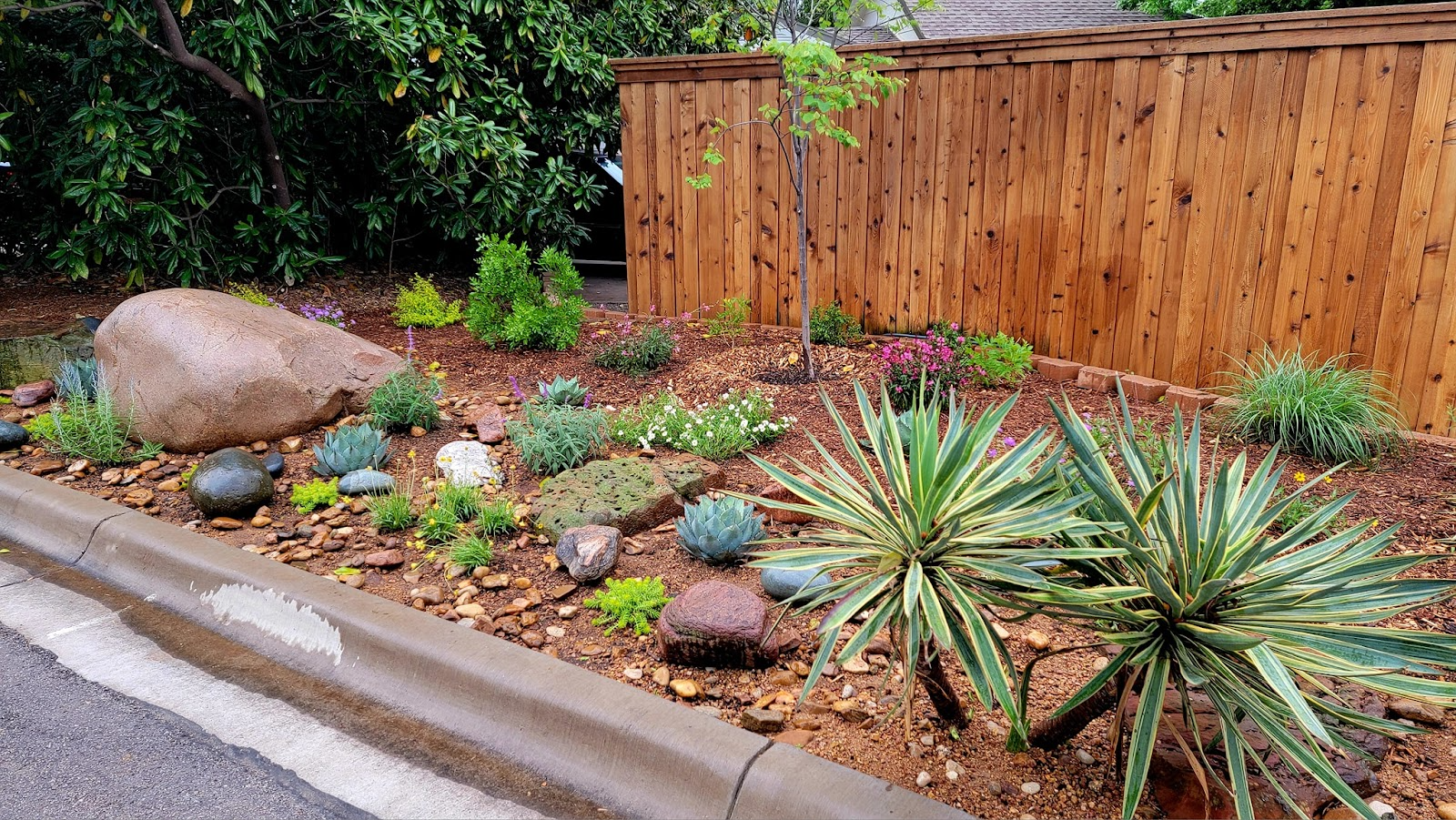
A newly installed Texas native garden designed to survive and thrive in hot climate conditions. Designed by Hot Dry Bold Garden. (Photo: Texas Nativescapes Facebook)
“Native plants, you plant them and literally nature comes. How they find it so quickly is a mystery to me, but they do," Hall said. "The goal is to figure out how to encourage people to plant native species in their yards that are not going to be disruptive to what they're already doing. It's a supplement to what they're already doing, where they can participate in making a little more room for nature to come back and to thrive in our cities."
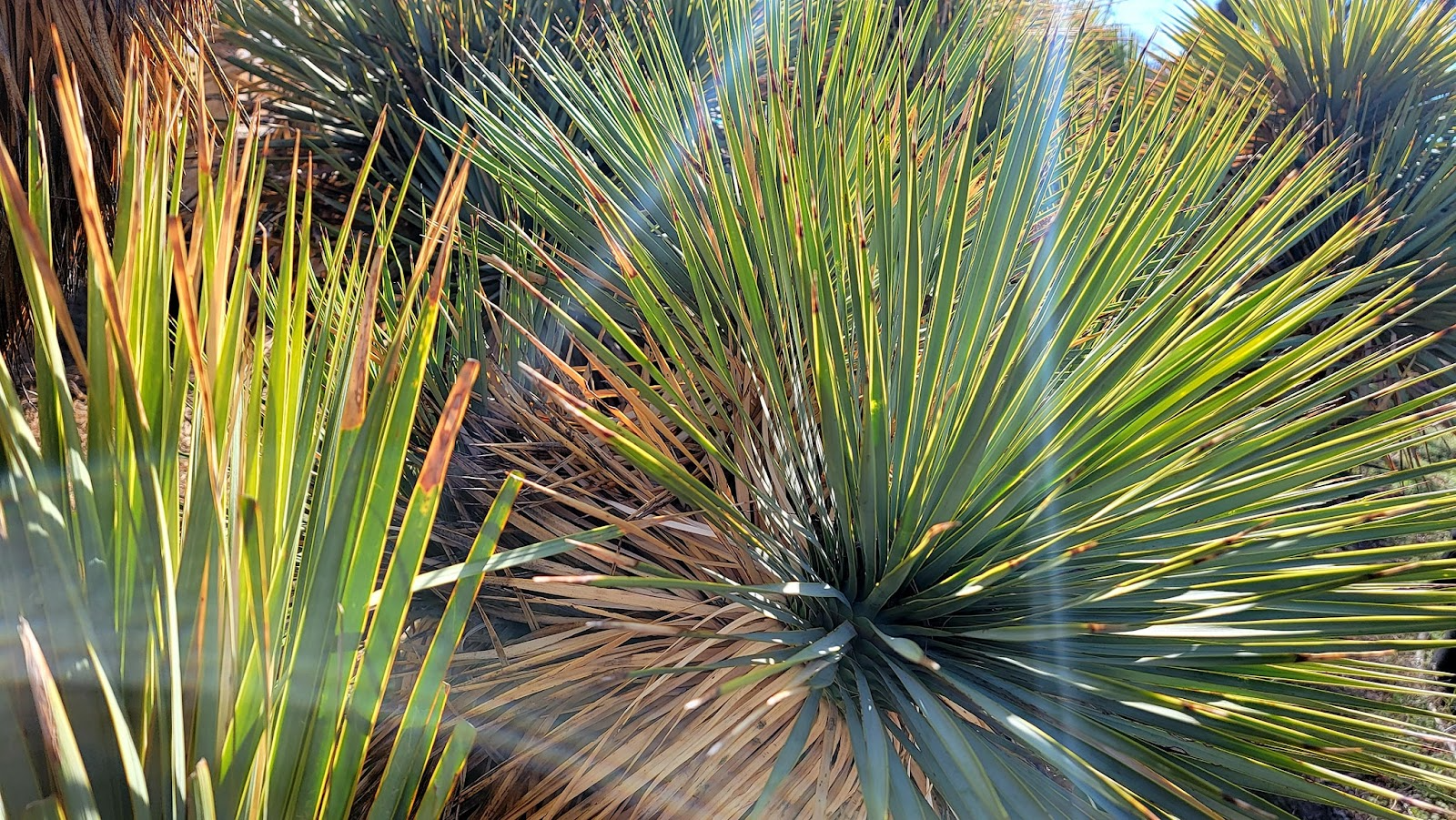
The Twin-flowered Agave is a low-maintenance, eco-friendly option for Texas homeowners. Though native to Mexico, these plants are considered a keystone species in Texas and support many of its pollinators, especially bees and hummingbirds. (Photo: Texas Nativescapes / Facebook)
Sadly citing the plight of the emblematic monarch as a bridge to understanding for many, he said, “It takes three to four generations for the monarch to make its way to the northern US and Canada. There's going to be a point at which those islands of nature are too small, too far apart, coupled with one bad winter, not enough food nor places to lay their eggs and they're not going make it.”
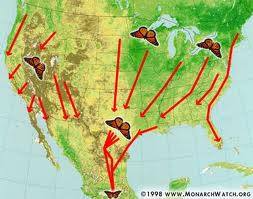
The migration of the monarch butterfly. (Photo: Monarch Butterflies Facebook)
Making of a Mission
Hall’s path to the native plant movement was a winding one. His lifelong connection to the natural world flourished, often through pursuits like hunting, fishing, hiking, and skiing.
The urban acreage he grew up on featured a large manicured lawn that he mowed as a boy as well as tidy, traditional landscaping. He took this for granted as the way things ought to be. It wasn’t until well into his adulthood, with property of his own, that his education into the importance of native plants began.
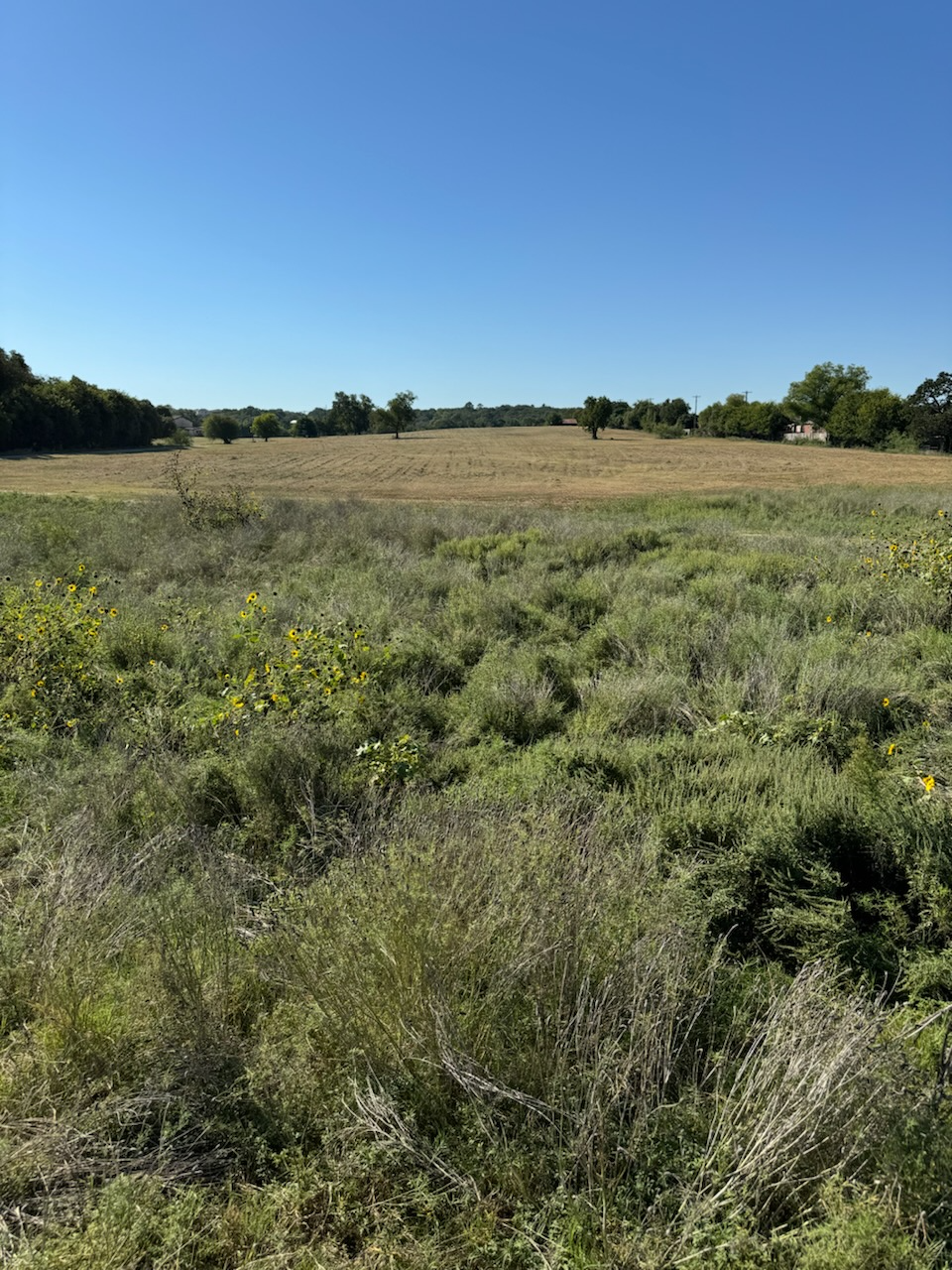
Forty-acre parcel that will be converted to native display gardens and will serve as the BILI campus. (Photo: Wallace Hall)
More than 20 years ago, Hall was interested in putting some of his land into a wetland mitigation bank—a process of working with federal agencies to create wetlands of like-kind, ahead of the destruction of those that have been approved by the Army Corps of Engineers for development.
Through this process he began learning a great deal about beneficial and invasive species, and the general destruction of nature. He carried these seeds of interest with him before they bloomed into a passion.
It wasn’t until the winter of 2021, locked inside by a Texas ice storm and a global pandemic, that Hall began reading Nature’s Best Hope by Doug Tallamy. The book, which had been an unexpected gift from a longtime friend, opened his eyes to what was around him.
“I've cared about nature…and somehow I just didn't understand the coevolutionary process between plants and insects and the importance of these relationships and everything else that happens in nature,” Hall said.
“It forced me to look at my own yard and I realized I had a beautiful front yard and a beautiful backyard, and it contributed absolutely nothing.”
On that fateful day, the sun slowly shone upon Hall’s neighborhood. As he looked out and pondered his own yard and the contribution it made, his gaze swept to the neighboring property. It was wilder, had more plant diversity, and was host to hundreds of birds singing in the wake of the storm and feeding on what lived there.
The difference was staggering, and the difference that he, and others, could make, was obvious.
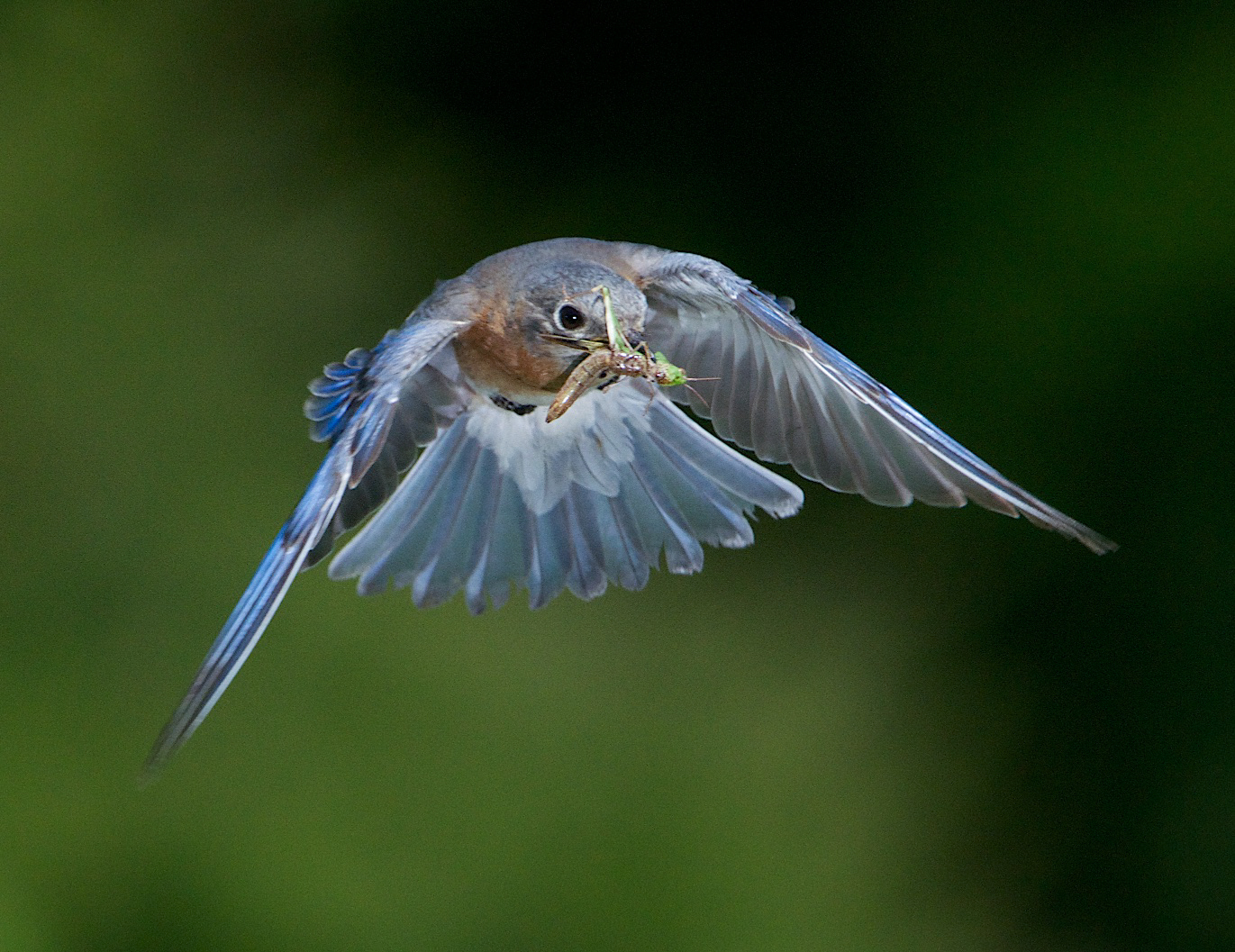
An eastern bluebird female flies to her nest with a grasshopper to feed her young. (Photo: Douglas Tallamy)
He thought of those fireflies from long ago, never imagining that that summer joy wouldn’t follow him into adulthood. “It was almost as if I didn't realize how much nature was disappearing until I read Doug Tallamy's book.”
Hall and his wife, Kristi, immediately began planning how they could make beneficial changes with native plants in their yard. As he began perusing local nurseries, he discovered that they were devoid of natives.
On the off-chance that he could find some of the plants he sought, he came to learn that while technically native, most of the plants were propagated in entirely different regions of the country, and were not genetically native to his ecoregion.
The more he learned, the more he felt spurned to action. “I don't want to continue to participate by doing nothing or worse, contributing to nature’s collapse. It's immoral to me, and I want to do something to help,” he said.
Thus, driven by his passion to support the natural world he’s loved for a lifetime, Hall has founded the Biodiversity is Life Initiative to amplify his impact by inspiring to action an ever-widening ring of people who resonate with the cause.
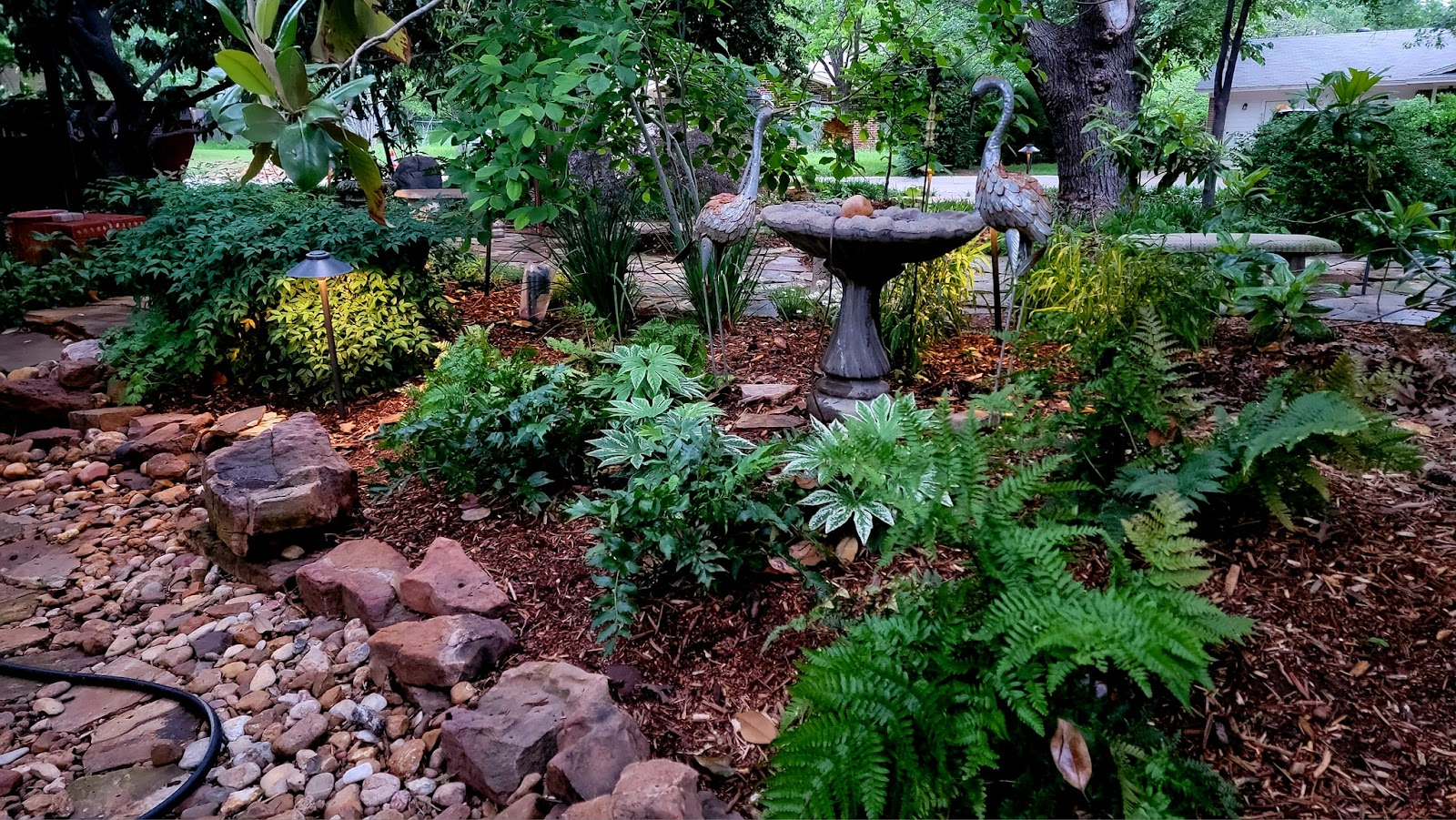
A home garden filled with Texas native plants in Dallas-Fort Worth. (Photo: Texas Nativescapes / Facebook)
With the twinkling eyes of someone who has seen firefly magic, Hall said, “This is a big idea. We want to prove to everybody—to Texas—that we can do it here. We can make it happen. We can make it happen in every city in America. We want to think big.”

The Biodiversity is Life Initiative will promote plants such as the Salvia Sage, which offers a rich source of nectar to traveling pollinators when in bloom. (Photo: Kinute)
